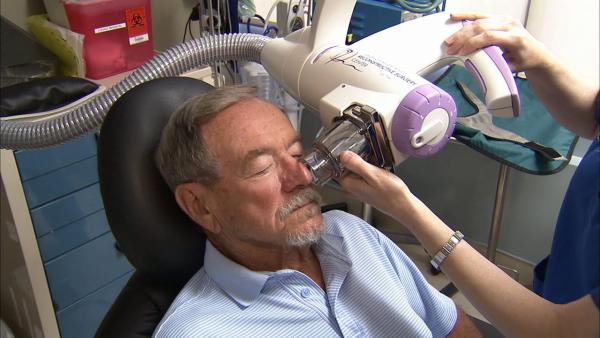Skin Cancer Treatment Biography
Source (google.com.pk )Professor Emeritus of Dermatology and was Chief of the Mohs Micrographic Surgery Unit at New York University Medical Center for more than forty years. A pioneer in Mohs Micrographic surgery, he has performed more than 40,000 Mohs surgical procedures. An accomplished educator in his field, Dr. Robins was the first to offer one-year fellowships in Mohs surgery and was also the first to train Mohs techniques to dermatologists from other countries. Dr. Robins has trained more than seventy doctors from around the world who are now leaders in dermatologic and skin cancer care. Approximately 40 percent of all doctors who specialize in Mohs surgery were either trained by Dr. Robins or doctors he trained. He has lectured in thirty-four countries in four languages. Dr. Robins is the founder and president of The Skin Cancer Foundation, a national and international organization dedicated to skin cancer research and public and medical education. In addition, Dr. Robins is the founder/president of the International Society of Dermatologic Surgery, founder/former president of the American College of Mohs Micrographic Surgery, and former president of the American Society of Dermatologic Surgery.
The American Academy of Dermatology has made Dr. Robins an honorary fellow for outstanding contributions in dermatology, and on behalf of The Skin Cancer Foundation, he has received its Award for Excellence in Education, 14 Gold Triangle Awards for Excellence in Community Education, and a Presidential Citation. He has been honored as a distinguished member of both the American College of Mohs Micrographic Surgery and the American Society of Dermatologic Surgery, and was awarded a Presidential Citation by the International Society of Dermatologic Surgery. The impact of Dr. Robins' work is far-reaching, and over a dozen international dermatologic societies have presented him with honorary memberships.
Dr. Robins has published over sixty articles in leading medical journals and is the founder of the Journal of Dermatologic Surgery and Oncology. He has authored five books for the general public: Sun Sense: a Guide to the Prevention and Early Detection of Skin Cancer, Understanding Melanoma: What You Need To Know with Maritza Perez, MD, Understanding Basal Cell Carcinoma: What You Need to Know, Understanding Squamous Cell Carcinoma: What You Need to Know, and Play it Safe in the Sun, an illustrated book for children. Dr. Robins is known internationally for the advancement of his specialty, his commitment to his patients, and his contributions to education.
Tanning is the skin's response to ultraviolet (UV) light - a protective reaction to prevent further injury to the skin from the sun. However, tanning does not prevent skin cancer.
What are risk factors for skin cancer?
The following are possible risk factors for skin cancer:
What is a risk factor?
A risk factor is anything that may increase a person's chance of developing a disease. It may be an activity, such as smoking, diet, family history, or many other things. Different diseases, including cancers, have different risk factors.
Although these factors can increase a person's risk, they do not necessarily cause the disease. Some people with one or more risk factors never develop the disease, while others develop disease and have no known risk factors.
But, knowing your risk factors to any disease can help to guide you into the appropriate actions, including changing behaviors and being clinically monitored for the disease.
heredity
People with a family history of skin cancer are generally at a higher risk of developing the disease. People with fair skin and a northern European heritage appear to be most susceptible.
environment
Due to a reduction of ozone in the earth's atmosphere, the level of UV light today is higher than it was 50 or 100 years ago. Ozone serves as a filter to screen out and reduce the amount of UV light that we are exposed to. With less atmospheric ozone, a higher level of UV light reaches the earth's surface.
Skin Cancer Treatment Skin Cancer Pictures Moles Symptoms Sings On Face Spots On Nose Photos Types Pics Wallpapers Pics

Skin Cancer Treatment Skin Cancer Pictures Moles Symptoms Sings On Face Spots On Nose Photos Types Pics Wallpapers Pics

Skin Cancer Treatment Skin Cancer Pictures Moles Symptoms Sings On Face Spots On Nose Photos Types Pics Wallpapers Pics

Skin Cancer Treatment Skin Cancer Pictures Moles Symptoms Sings On Face Spots On Nose Photos Types Pics Wallpapers Pics

Skin Cancer Treatment Skin Cancer Pictures Moles Symptoms Sings On Face Spots On Nose Photos Types Pics Wallpapers Pics

Skin Cancer Treatment Skin Cancer Pictures Moles Symptoms Sings On Face Spots On Nose Photos Types Pics Wallpapers Pics

Skin Cancer Treatment Skin Cancer Pictures Moles Symptoms Sings On Face Spots On Nose Photos Types Pics Wallpapers Pics

Skin Cancer Treatment Skin Cancer Pictures Moles Symptoms Sings On Face Spots On Nose Photos Types Pics Wallpapers Pics
Skin Cancer Treatment Skin Cancer Pictures Moles Symptoms Sings On Face Spots On Nose Photos Types Pics Wallpapers Pics

Skin Cancer Treatment Skin Cancer Pictures Moles Symptoms Sings On Face Spots On Nose Photos Types Pics Wallpapers Pics

No comments:
Post a Comment